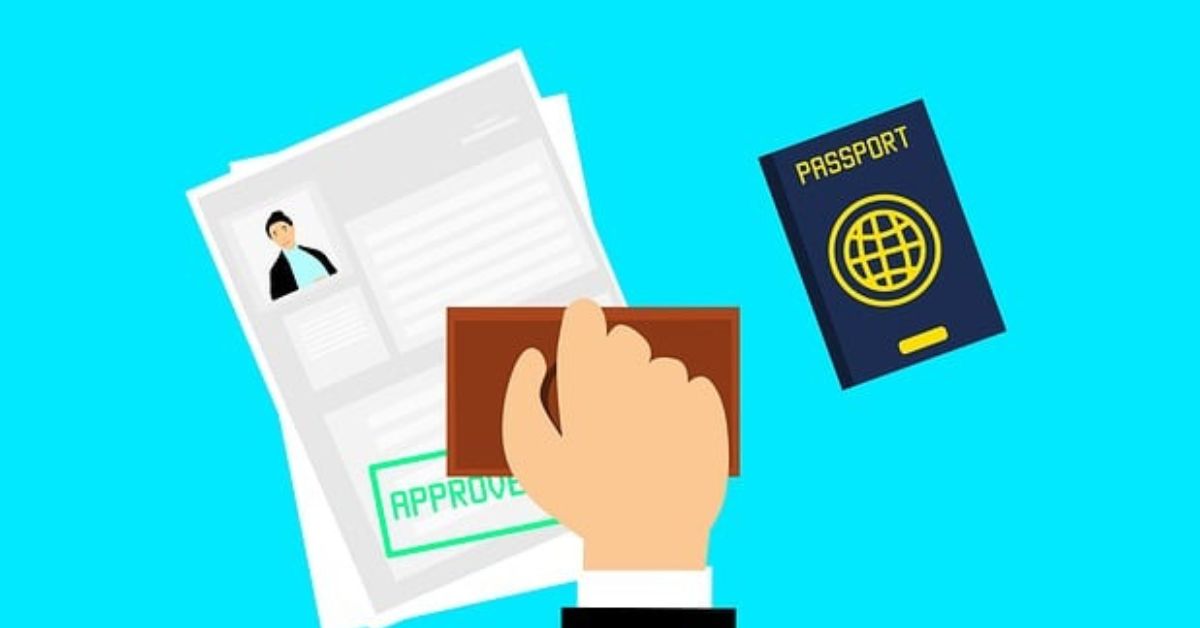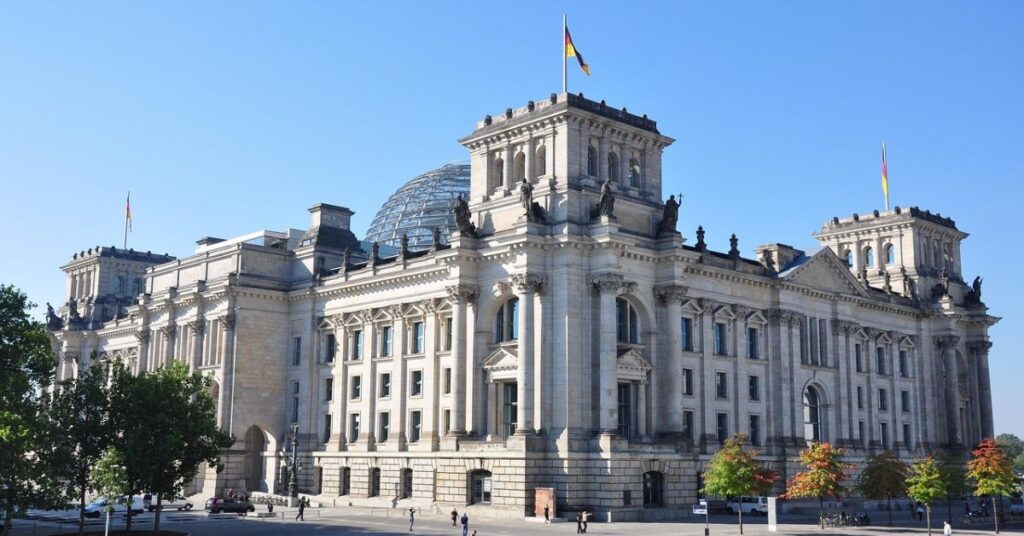When you’re looking at the Contributory Parent Visa (subclass 143), one of the biggest things on your mind is probably how long it’s all going to take. The 143 visa processing time isn’t exactly quick, and it’s important to go into it with your eyes wide open. This visa is designed for parents who want to live in Australia permanently with their children, but it does involve a significant financial contribution. Because of this, the parent 143 visa processing time can stretch out considerably.
Understanding The 143 Visa Processing Time For Parent Visas
The Department of Home Affairs processes these applications, and while they aim for efficiency, the sheer volume of applications means patience is key. It’s not uncommon for the contributory parent visa 143 processing time to span several years. This isn’t a visa you’ll get in a few months; it’s a long-term commitment from both the applicant and the department.
Here’s a general idea of what you might expect, though these figures can change:
| Percentage of Applications | Processing Time |
| 25% | 48 months |
| 50% | 58 months |
| 75% | 65 months |
| 90% | 70 months |
This table shows that while some applications are processed faster, a significant portion takes much longer. It’s wise to prepare for the longer end of this spectrum.
Several things can influence how long your specific application takes:
- Application Completeness: Making sure you’ve submitted every single document and form correctly from the start is a big one. Missing bits and pieces are a common reason for delays.
- Departmental Workload: The number of applications being processed at any given time really affects things. High demand means longer waits.
- External Checks: Health and character assessments, while necessary, can sometimes take a while to come back from various agencies.
It’s really about setting realistic expectations. This visa is a significant pathway to permanent residency, and the process reflects that. Being prepared for a lengthy wait can save a lot of stress down the track.
Eligibility And Prerequisites Before Applying: Impact On 143 Visa Processing Time
Before you even think about submitting your application for the 143 Contributory Parent Visa, making sure you tick all the boxes for eligibility is a really big deal. It’s not just about meeting the basic requirements; it’s about how well you meet them right from the start. If you’re not eligible, well, your application won’t go anywhere, and that’s the ultimate delay, isn’t it?
So, what are we talking about here? First off, you need to have a child who is an Australian citizen, a permanent resident, or an eligible New Zealand citizen. And here’s a bit of a catch: more than half of your children need to be living in Australia, or at least more than live in any other country. This is a pretty strict rule, and if it’s not met, the application just won’t proceed. It’s not something you can fix later on, so get it right from the get-go.
Then there’s the balance of family test. This is basically the same idea as what I just mentioned, making sure your family ties are predominantly in Australia. It’s a key factor that the Department of Home Affairs looks at very closely. If this test isn’t passed, your application will likely be refused, and that’s a massive setback, obviously.
Beyond the family connection, you also need to consider the age and relationship requirements. Generally, you need to be a parent of the sponsor, and often there are age limits involved, though the 143 visa is for older parents. It’s important to check the specific criteria for your situation. Missing these details means your application won’t even get to the stage where processing times really start to matter.
| Requirement Category | Specifics to Check |
| Sponsor’s Status | Australian Citizen, Permanent Resident, or Eligible NZ Citizen |
| Family Ties | More than half of the children in Australia, or more than in any other country |
| Relationship to Sponsor | Parent of the sponsor |
It’s also worth noting that you can’t have any outstanding debts to the Australian government. If you do, you’ll need to sort those out before you can apply. This is another one of those prerequisites that can cause a significant hold-up if not addressed early. Basically, getting the eligibility right upfront is the first and most important step to avoid any unnecessary delays in your 143 visa journey. It sets the foundation for everything that follows.
Preparing Documentation: How Careful Preparation Can Reduce 143 Visa Processing Time
Getting your paperwork sorted for the 143 visa is a big part of the whole process, and honestly, doing it right from the start can save you a lot of waiting down the track. Think of it like packing for a long trip – if you forget something important, you’ll just end up delaying yourself. The Department of Home Affairs needs a clear picture of who you are and your relationship with your sponsor, and they need it all to be correct and complete.
The more organised and thorough you are with your documents, the smoother things will generally go. This means not just ticking boxes, but really making sure every piece of information is accurate and supported by evidence.
Here’s a breakdown of what’s usually needed and why it matters:
- Identity Documents: This includes things like birth certificates, passports, and any previous name change documents. These prove who you are and that you’re related to your sponsor.
- Relationship Evidence: You’ll need to show proof that you are indeed the parent of your Australian child. This could be marriage certificates (if applicable), birth certificates of your children, and sometimes even evidence of your ongoing relationship, like photos or correspondence.
- Financial Documents: The visa has a significant cost, and you’ll need to show you can meet these financial obligations. This often involves providing financial statements or other proof of funds.
- Health and Character Checks: These are separate processes, but you need to have them organised. Delays in getting these done can hold up your application, so it’s wise to start thinking about them early.
It’s not just about having the documents; it’s about how you present them. Make sure everything is clear, legible, and if it’s not in English, you’ll need a certified translation. Missing a single form or providing a document that’s expired can mean the department has to ask for more information, and that’s where the real delays start to creep in. They might send out a Request for Further Evidence (RFE), and that adds time to your application while you scramble to get what they need.
Gathering all the necessary documents can feel like a lot, but it’s really about being methodical. Think about creating a checklist and working through it systematically. If you’re unsure about anything, it’s better to ask for clarification before you submit than to assume you’ve got it right.
For example, if you’re providing police certificates, make sure they are from every country you’ve lived in for a certain period. If they’re about to expire, get new ones. The same goes for health checks – they have a validity period. Being proactive with these time-sensitive documents means you won’t have to repeat steps later on, which is a win for everyone involved, especially when you’re keen to have your family with you in Australia.
Applying: Key Steps That Influence The 143 Visa Processing Time
Getting your application submitted correctly is a big deal when you’re applying for the 143 visa. It’s not just about ticking boxes; it’s about making sure everything is in order from the get-go. If you miss something or don’t fill out a form properly, it can really slow things down. Think of it like building something – if the foundation isn’t right, the whole thing can get wobbly.
Here are a few things that really matter at this stage:
- Completeness is Key: Make sure every single document the Department of Home Affairs asks for is included. This means things like birth certificates, marriage certificates, proof of your relationship with your sponsor, and any other evidence they specify. Don’t just guess; check the official list.
- Paying the Fees: There are a couple of big payments involved with the 143 visa. You need to pay the initial application charge when you lodge your application. Later on, you’ll be asked to pay the second visa application charge. Paying these on time is super important. If you’re late, your application can be put on hold.
- Accuracy Matters: Double-check all the names, dates, and details on your forms. Even small mistakes can confuse and lead to delays while the department tries to sort them out.
Submitting a complete and accurate application right from the start is the best way to avoid unnecessary delays. It shows you’ve taken the process seriously and are ready to proceed.
If you’re applying from within Australia, you’ll usually get a Bridging Visa once you lodge your application. This lets you stay in the country legally while your 143 visa is being processed. It’s a good idea to understand the conditions of your Bridging Visa, especially if you plan to travel.
Initial Assessment & Checks: What Happens Early In The 143 Visa Processing Time

Once you’ve submitted your application for the 143 visa, the Department of Home Affairs begins the initial assessment phase. This is where they confirm they’ve received everything and start the ball rolling. The primary goal here is to make sure your application is complete and all the basic requirements are met before it moves further along.
Here’s a breakdown of what typically occurs:
- Receipt Confirmation: You’ll get an acknowledgement that your application has been lodged. If you applied from within Australia, you’ll usually be granted a Bridging Visa at this point, allowing you to remain lawfully in the country while your parent visa is being processed.
- Data Entry and Initial Review: Your details and submitted documents are entered into the system. Case officers conduct a preliminary check to see if all mandatory forms are filled out and if the initial application charges have been paid.
- Verification of Basic Eligibility: They’ll do a quick check to confirm that the sponsor meets the residency requirements and that the applicant meets the basic criteria for a parent visa, such as the family balance test.
It’s really important that all your paperwork is in order from the get-go. Any missing documents or incorrect information at this early stage can cause significant delays. Think of it like building a house; if the foundation isn’t solid, the whole structure can be compromised later on. This is why taking the time to prepare thoroughly before you even lodge is so important for the overall visa timeline.
The initial assessment is a critical gatekeeping step. It’s designed to filter out applications that are clearly not viable or are missing essential components, thereby streamlining the process for the department and setting a clear path for those applications that proceed.
Departmental Reviews And Security Clearances: Critical Delays In 143 Visa Processing Times
Once your application has passed the initial checks, it moves into a more intensive phase. This is where the Department of Home Affairs conducts thorough reviews, including security and character clearances. These steps are absolutely vital for national security and public interest, but they can also be a significant source of delays for your 143 visa application.
Think of it like this: the department needs to be completely sure about who is coming into Australia. This involves checking various databases and sometimes even liaising with other government agencies, both here and overseas. If there are any complexities or if information isn’t readily available, it can add time to the process. These checks are non-negotiable and are designed to be comprehensive.
Here’s a breakdown of what typically happens:
- Character Assessments: This involves looking into your criminal history, if any, and assessing your general character. You’ll likely need to provide police certificates from every country you’ve lived in for a certain period.
- Security Clearances: Depending on the circumstances, more in-depth security checks might be required. This is standard procedure for many visa types.
- Health Examinations: While often completed earlier, sometimes further health checks or clarifications might be requested.
It’s not uncommon for these reviews to take several months, especially if there are any flags or if external agencies need to provide information. The department has to wait for responses, and that can be out of your control.
The volume of applications and the need for meticulous vetting mean that patience is key during this stage. While you can’t speed up these specific departmental reviews, ensuring all your initial documentation was accurate and complete can prevent additional back-and-forth that might otherwise prolong the wait.
Sometimes, the department might need more information to complete these checks. If they send you a ‘Request for Further Evidence’ (RFE), it’s important to respond as quickly and thoroughly as possible. Missing information here can cause even more significant delays. You can check the visa processing times for an idea of current wait periods, but remember these are averages.
Additional Requests For Information: When “Requests For Further Evidence” Affect 143 Visa Processing Time
Sometimes, even after you’ve submitted everything you think is needed, the Department of Home Affairs might ask for more information. This is called a Request for Further Evidence (RFE). It’s not necessarily a bad sign, but it does mean your application won’t be finalised until they get what they need.
These requests can pop up at various stages. Maybe they need clarification on a document, a more recent health check, or perhaps some extra proof of your relationship with the sponsor. It’s really important to respond to these requests as quickly as you can. The clock on your visa processing time pretty much stops ticking until you provide the requested details. The faster you get the information back to them, the sooner they can continue assessing your application.
Here’s what typically happens when an RFE is issued:
- Notification: You’ll receive a formal letter or email detailing exactly what information is required.
- Response Period: There will be a specific timeframe within which you must provide the requested evidence. Missing this deadline can lead to your application being refused.
- Submission: You’ll need to submit the additional documents, usually through the same online portal or method you used for your initial application.
- Re-assessment: Once received, the department will review the new information and continue with the assessment process.
It’s a bit like a pause button being pressed on your application. While you can’t speed up the department’s review process itself, you can certainly influence how long that pause lasts by being organised and prompt with your response. If you’re unsure about what’s being asked, it’s worth seeking advice to make sure you provide exactly what they need. This can help avoid further delays down the line. You can find general information about Parent Visa processing times on the Department’s website.
Dealing with an RFE can feel a bit stressful, especially when you’re already waiting for a long time. The key is to stay calm, read the request carefully, and gather the necessary documents without delay. Think of it as a necessary step to get your visa approved.
For example, if they ask for updated police certificates from a country you haven’t lived in for years, you’ll need to go through the process of obtaining those. Or, if they need more evidence of your sponsor’s financial capacity, you’ll have to gather bank statements and tax returns. Each of these steps takes time, and they all add to the overall 143 visa processing time.
Final Decision & Notification: How The 143 Visa Processing Time Concludes
Once the Department of Home Affairs has finished all the checks and reviews, they’ll decide on your 143 visa application. This is the final step in the processing timeline. You’ll get a formal notification about their decision. If it’s a grant, congratulations! This means you’ve met all the requirements and can now live in Australia permanently. The notification will include details about your visa grant, including any conditions that might apply.
If, for some reason, your application isn’t successful, the notification will explain why. It will also outline the steps you can take if you disagree with the decision, such as applying for a review. It’s really important to read this notification carefully, no matter the outcome.
The visa grant notice is the official confirmation that your application has been approved.
Here’s a general idea of what happens next:
- Visa Grant Notification: You’ll receive an official letter or email detailing the visa grant. This document is very important, so keep it safe.
- Visa Conditions: The notification will list any conditions attached to your visa. Most parent visas have conditions, so make sure you understand them.
- Next Steps: If granted, the notification will guide you on what to do next, which usually involves preparing for your move to Australia.
It’s worth remembering that even after the decision, there might be a short period before the visa is officially active or before you can travel. Always check the specifics in your grant letter.
Post-Approval Steps And Visa Issuance: What Follows After The 143 Visa Processing Time
So, you’ve heard back about your 143 visa application, and it’s been approved! That’s fantastic news, and it means all that waiting and paperwork has finally paid off. But what happens next? It’s not quite time to pack your bags just yet, as there are a few more things to sort out before you can officially call Australia home.
The most important next step is to pay the Second Visa Application Charge (VAC). This is a substantial fee, and it’s usually requested once the Department of Home Affairs has assessed your application and is ready to grant the visa. Make sure you pay this promptly, as payment delays can unfortunately hold up the finalisation of your visa.
Once the Second VAC is paid and all other requirements are met, the Department will officially grant your Subclass 143 Contributory Parent visa. You’ll receive a formal notification of this grant. This notification will detail the visa conditions and the date it becomes effective. It’s a good idea to keep this document safe, as it’s your official proof of your permanent residency status in Australia.
If you applied for the visa while you were in Australia, you would have likely been on a Bridging Visa. Once your 143 visa is granted, your Bridging Visa will cease. You’ll then be able to travel in and out of Australia freely, as per the conditions of your new permanent visa. If you applied from overseas, the grant notification will outline how to make your first entry into Australia.
It’s really important to understand that even after the visa is granted, there might be a short period before you can actually travel. Check the grant letter carefully for any specific travel dates or conditions. Sometimes, there’s a requirement for your first entry to be within a certain timeframe after the grant date.
Here’s a quick rundown of what to expect:
- Visa Grant Notification: You’ll receive official confirmation that your visa has been granted.
- Payment of Second VAC: This is a significant financial step that needs to be completed.
- Visa Conditions Review: Familiarise yourself with the terms and conditions of your permanent visa.
- Travel Arrangements: Plan your first entry into Australia if you applied from offshore, or understand your travel rights if you applied onshore.
- Settlement Planning: Start thinking about where you’ll live, healthcare, and other aspects of settling into Australian life.
Factors Affecting Variance In 143 Visa Processing Time And How To Optimize Your Timeline
So, you’re wondering why some 143 visa applications zip through while others seem to take forever? It’s a bit like waiting for a bus on a Sunday – sometimes it’s quick, other times you’re left standing there for ages. Several things can really throw a spanner in the works, or conversely, speed things up.
First off, the sheer number of applications the Department of Home Affairs gets is a big one. They’re dealing with a lot of people wanting to bring their parents over, and that naturally creates a queue. Think of it like a popular cafe; the more customers, the longer you might wait for your coffee. The volume of applications submitted directly impacts how long you’ll be waiting.
Then there’s how complete your application is. If you miss a document or fill out a form incorrectly, it’s like sending a letter with the wrong address – it’s going to get sent back or delayed. This is why getting everything right from the start is so important. You can find some helpful tips on preparing your application here.
Here are some common reasons for delays:
- Incomplete documentation: Missing birth certificates, financial proof, or other required papers.
- Slow responses to requests: Not getting back to the Department quickly when they ask for more info.
- External checks: Delays in getting health checks or police clearances from third parties.
- Application backlog: Sometimes, there’s just a general backlog due to high demand or unforeseen events.
It’s also worth remembering that parent visas aren’t usually fast-tracked. They’re not considered urgent compared to, say, a skilled worker visa. This means they often sit lower down the priority list, which can add to the waiting time.
To try and speed things up on your end, make sure you:
- Double-check everything: Go through all your forms and documents multiple times before submitting.
- Pay fees promptly: Don’t delay any payments required.
- Respond quickly: If the Department contacts you, get back to them as soon as possible.
Sometimes, things outside your control happen, like changes in government policy or unexpected global events that affect processing. While you can’t control those, being organised and proactive with your own application is the best way to manage the timeline.
Thinking about the 143 visa? Lots of things can change how long it takes to get approved. We’ve broken down the main reasons why processing times can vary, so you know what to expect. Want to speed things up? Check out our tips on how to make your application process smoother. Visit our website to learn more about optimising your 143 visa timeline.
Frequently Asked Questions
How long does it usually take to get a 143 visa?
Getting a 143 visa can take a really long time. The government says that about 75% of these visas are processed in about 38 months, and 90% take around 39 months. But sometimes, it can take even longer, like over 5 years, because there are so many people applying and not enough spots each year.
Why do 143 visas take so long to process?
The main reason is that lots of people want to bring their parents to Australia, but there’s a limit on how many visas can be given out each year. This means applications have to wait in a line or ‘queue’ until a spot opens up, which can take years.
What does ‘capping and queuing’ mean for my visa application?
‘Capping’ means there’s a maximum number of parent visas that can be approved in a year. ‘Queuing’ means that after your application is checked and approved, it gets put in a line based on when it was lodged. You have to wait for your turn in the queue before it can be fully processed.
Can anything make my 143 visa application faster?
While you can’t speed up the queue itself, you can help your application move along by making sure you fill out all the forms correctly and include every single document needed right from the start. Also, if the immigration department asks for more information, send it back to them as quickly as you can.
What happens after I lodge my 143 visa application?
First, they’ll check if your application is complete and meets the basic rules. If it does, they’ll give you a ‘queue date’ and put you in the line. Later, when a visa spot is available, they’ll take your application out of the queue for the final checks.
What kind of documents do I need for a 143 visa?
You’ll need lots of proof, like documents showing who you are, your relationship to the person sponsoring you in Australia, and that you meet health and character rules. It’s important to have all these ready to avoid delays.
Can I check the status of my 143 visa application?
The Department of Home Affairs gets too many requests to give updates on individual visa applications. They will let you know in writing when your application is ready for the next step or when a decision is made. You can sometimes check your application status online through Immi Account if you link your paper application.
Are there other parent visas if the 143 takes too long?
Yes, there are other parent visas like the Contributory Parent (Temporary) visa (subclass 173), which can be a stepping stone, or the Aged Parent visa (subclass 804) if you meet the age requirements. However, some of these might also have long waiting times.











